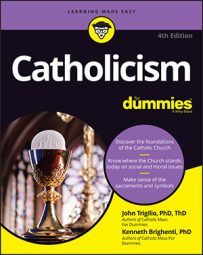At the end of the 15th century, however, people witnessed the gradual disintegration of that unity. They saw the appearance of modern nations and languages; the discovery of the New World by Columbus in 1492; and a revival of classical art, architecture, and literature. Greek and Roman classics from Homer, Sophocles, Virgil, Ovid, Horace, and Cicero eclipsed the former staples of Plato and Aristotle. Humanism arose as a system of thought that bridged the sacred world of heavenly faith and the secular world of earthly wisdom (at least that was its original intent). This classical resurgence became the impetus of what we call the Renaissance.
Witnessing the Renaissance
The Renaissance was born in Florence, Italy, which gave the world poets Dante Alighieri and Francesco Petrarch, artists Michelangelo Buonarroti and Leonardo da Vinci, and thinkers Vittorino da Feltre and Giovanni Boccaccio. And that city is also associated with such famous names as Medici, Machiavelli, and Borgia. From Italy, the ideals of the Renaissance flowed, crossing the Alps into France, Germany, and finally, England.The Church encouraged the Renaissance and became a great patron of the sciences, literature, and art. However, a great deal of secularism (worldliness) crept in, and people lost much of their respect for their spiritual leaders. Many abuses in the Church weren't dealt with in a timely manner. Ignorant clergy and a greedy episcopacy eventually gave rise to reformers, people determined to bring about reform. Unfortunately, some of it wasn't really reform (change made within the Church structure) but revolt, which led to division.
Corruption in the Church
Pope Julius II (1503–13) decided to rebuild St. Peter's Basilica, which was in desperate need of repair. He communicated to the faithful that anyone who went to confession and Holy Communion and then donated according to their means (called almsgiving) toward the restoration of the historic Church could receive a plenary indulgence if all the conditions were met. Thus began a descent into corruption that would ultimately lead to the Reformation.Some background: A plenary indulgence is a total remission of the temporal punishment due to sins already forgiven in confession. Simply put, it's an application of God's divine mercy to remove the effects of past sin. An indulgence isn't forgiveness itself nor is it absolution; it presupposes both before it can happen. Sin can have two consequences, eternal punishment (hell) and temporal punishment (purgatory). Unrepentant and un-forgiven mortal sins result in eternal punishment. Forgiven sins are free from eternal punishment, but they retain a temporal punishment. God's mercy forgives sin, and God's justice rewards good and punishes evil.
Of course, no one can buy an indulgence. To gain an indulgence, the person has to be in the state of grace — not conscious of any mortal sins — and free of all attachment to sin, even venial ones. By attachment, we mean any fond memories of past but forgiven sins. So no amount of money could automatically guarantee someone an indulgence. Only someone who had sorrow for his sins, confessed them, was absolved of them, and then performed a charitable work, such as giving alms or some other act of mercy, could be eligible for an indulgence.
The problem was that after Pope Julius's statement, a few avaricious and greedy bishops and priests, along with some like-minded princes, literally sold indulgences, which was a violation of canon law then and now and is also a mortal sin called simony. Telling people, "If you donate some silver pieces for this project, you can use the indulgence to get grandma out of purgatory," is a mortal sin. Indulgences don't work that way, but some unscrupulous people saw an opportunity to exploit others. Pope Julius's successor, Leo X (son of Lorenzo de Medici), was just such an unscrupulous man. In Germany as well, this practice was encouraged, and preachers went from town to town to encourage the rebuilding of St. Peter's. Pope Julius II's original message became distorted, and it began to look like the Church was indeed selling spiritual favors for money.
The rise of the middle class
After the fall of the Roman Empire, people belonged to one of three groups — the peasants, the nobility, or the Church — for most if not all of their lives. The Church (especially bishops, abbots, and cardinals) along with the nobility (kings, queens, lords, dukes, barons, counts, and so on) were the educated members of society and held power and authority. Things changed, however, when a middle class emerged and moderate wealth was achieved not by noble birth or by entrance into religious life or by ordination. Merchants became a middle ground between the poverty of peasants and the affluence of the aristocracy.Before the Reformation, the last three significant events of the Middle Ages were The Black Death, The Babylonian Captivity, and The Great Schism. All of these events contributed to the need for reform.
The good and bad effects of the Reformation
Martin Luther taught that Scripture alone (sola scriptura) and faith alone (sola fide) were the cornerstones of Christian religion and that the Church wasn't a necessary institution for the believer's salvation. This teaching had a domino effect, with others dissenting from Catholic doctrine and starting their own religions.But Luther and the Protestant Reformation did compel the Catholic Church to spell out its teachings on grace, salvation, and the sacraments more clearly. It also prompted internal reforms, such as the establishment of seminaries to give unified and thorough priestly training. The Reformation instigated an internal reevaluation, not of doctrine or worship, but of how to rid the Church of abuse and to delineate exactly and precisely what differentiated Catholic Christianity from Protestant Christianity.

